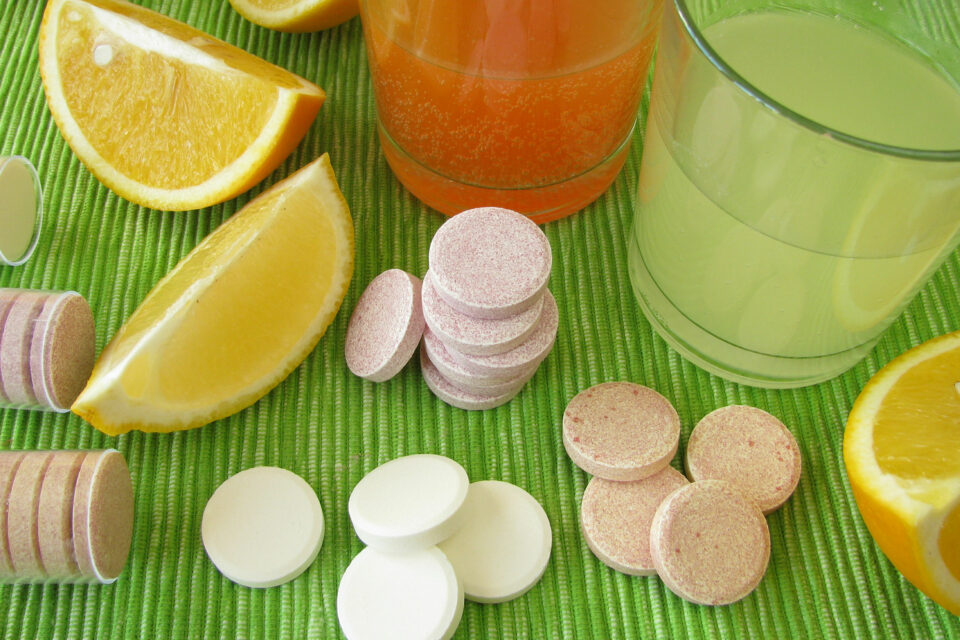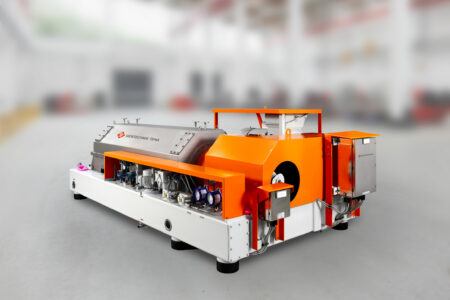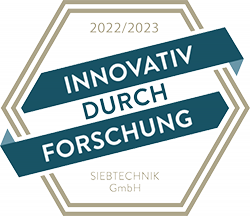Screen scroll centrifuge CONTURBEX
The CONTURBEX is a continuously operating, filtering centrifuge with a very wide range of applications.
Sodium hydrogen carbonate, also known as baking soda, sodium bicarbonate or colloquially as baking powder, is a versatile and widely used chemical compound with a variety of applications.
This white, crystalline powder has taken an important place in many areas of daily life due to its diverse properties.
In the food industry, sodium bicarbonate is an ingredient in baking powder and sherbet powder.
It is also used in household cleaning products to effectively neutralize odors and thoroughly clean surfaces.
In the medical field, sodium bicarbonate is sometimes used as an antacid to relieve heartburn and acid reflux. It is also used in dialysis.
Sodium bicarbonate is also a component of fire extinguishing powder and is used as a water softener.


Sodium bicarbonate (baking soda) can be obtained in several ways, but the most common method is by chemical reaction.
Sodium bicarbonate is also found as the natural mineral „trona“/“sesquisoda“ in soda lakes, highly alkaline lakes or volcanic springs. In some regions, sodium bicarbonate is mined from natural deposits. In this case, it is called natural soda or natron. It is also found as „nahcolite“ in oil shale, a by-product of oil production.
Baking soda (sodium hydrogen carbonate or sodium bicarbonate) can be made by mixing saturated sodium carbonate solution (soda solution) with carbon dioxide (CO₂) and water while cooling.
The saturated sodium carbonate solution is brought into contact with carbon dioxide (CO₂) The sodium carbonate reacts with the carbon dioxide and water to form sodium bicarbonate and carbonic acid (H₂CO₃).
The chemical equation is as follows:
Na₂CO₃(aq) + CO₂ (g) + H₂O (l) → 2 NaHCO₃ (aq)
During or after the reaction, the solution is cooled to promote the precipitation of sodium bicarbonate. When the solution is cooled, the sodium hydrogen carbonate crystallizes out of the solution and precipitates as a solid.
The resulting sodium hydrogen carbonate can be separated from the liquid by filtration or centrifugation. It is then washed and dried to yield pure sodium bicarbonate powder.
Due to the generally very fine particle sizes (60 – 150 μm), the general separation of the solids takes place with a pusher centrifuge as a post-dewatering device after a drum filter, whereby the discharge moisture of the filter can be reduced from approx. 18 % by weight to 10 – 12 % by weight.
Further drying must take place at a low temperature, as sodium bicarbonate decomposes back to sodium carbonate, carbon dioxide and water above 65 °C (reversal of the production reaction).
Due to the fineness of the crystals, our SHS pusher centrifuge is particularly suitable for post-dehydration of sodium bicarbonate. Compared to other types of centrifuges, the SHS achieves…
SIEBTECHNIK TEMA centrifuges are specially optimized for the respective separation task. When selecting materials, austenitic and ferritic stainless steels have proven themselves in centrifuge construction for applications subject to normal stresses.
For processes in which abrasive materials are processed, the centrifuges must be provided with effective wear protection. Starting with hard coal processing, we have been continuously developing wear protection systems since 1922.
Our centrifuges can be equipped with highly developed wear protection systems made of e.g. tungsten carbide, Stellite® or ceramic tiles, to name but a few. Rubber coatings or matrix coatings have also proven themselves in various applications.
If required, our engineers develop new and efficient solutions in coating, bonding and joining technology for our customers worldwide.
Centrifuge components must not only withstand high forces, but also process-related stresses such as corrosion, wear and high temperatures. Cost and availability of materials also play an important role. Our customers select the necessary product-contacting materials according to these very specific requirements.
Duplex and high-alloy stainless steels, Hastelloy® and titanium materials for a wide variety of processes and stresses are part of our daily business in centrifuge construction. Our quality management has developed very detailed and cost effective processes for design, manufacturing processes and component testing based on European guidelines.
Typical sheet metal and forging materials for centrifuge wetted components include

The CONTURBEX is a continuously operating, filtering centrifuge with a very wide range of applications.

The SIEBTECHNIK TEMA SHS pusher centrifuge has established itself and proven itself as a modern high-performance unit in many industries.

Our decanters are individual, functional and versatile. They offer highly efficient separation of even the finest solids with almost complete clarification of the liquid phase.

Find the right contact for your region.
We have the right solution for every task. And if not, we’ll work with you to find one. Get in touch with us!
Our specialists will be happy to advise you individually on site or remotely, and are available to answer any questions you may have. Send us a message using our
